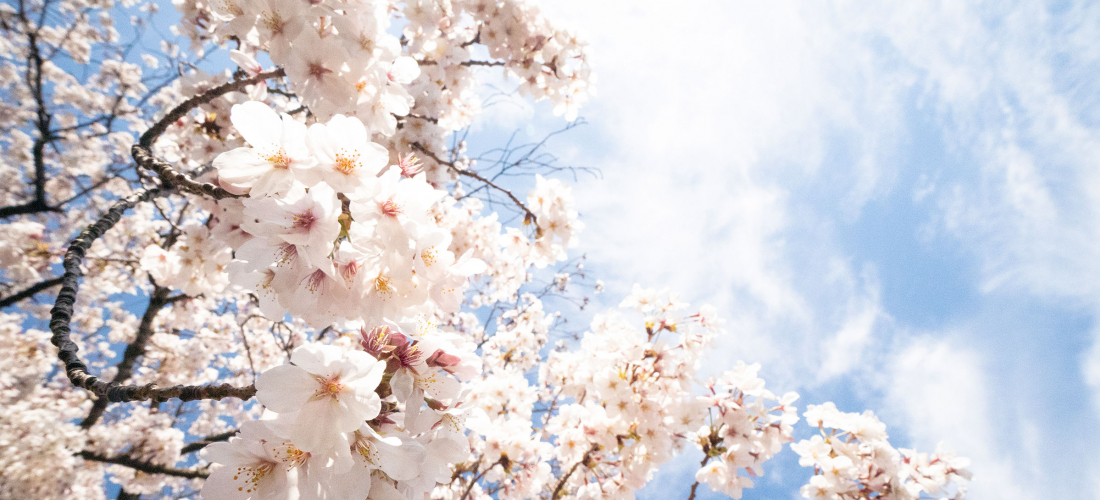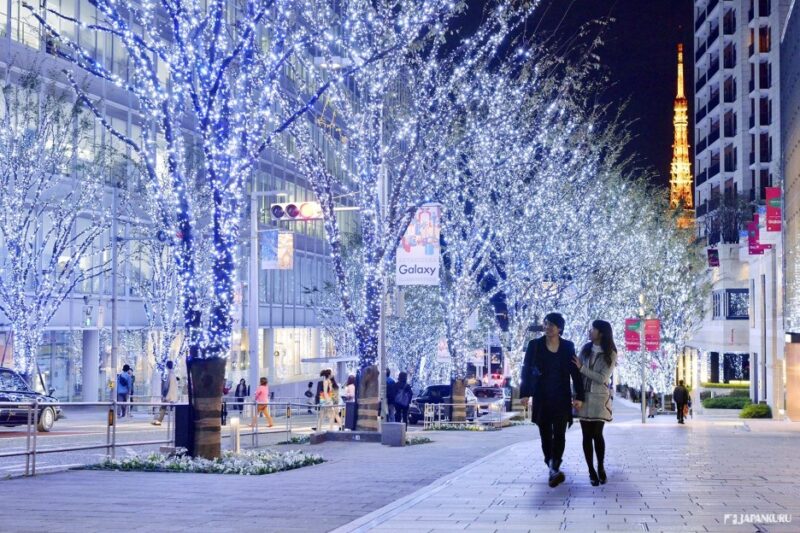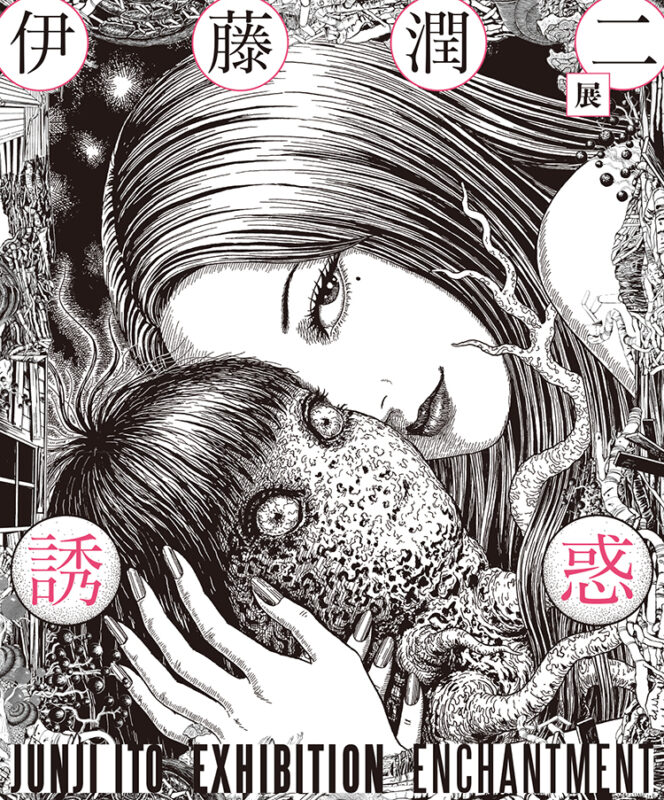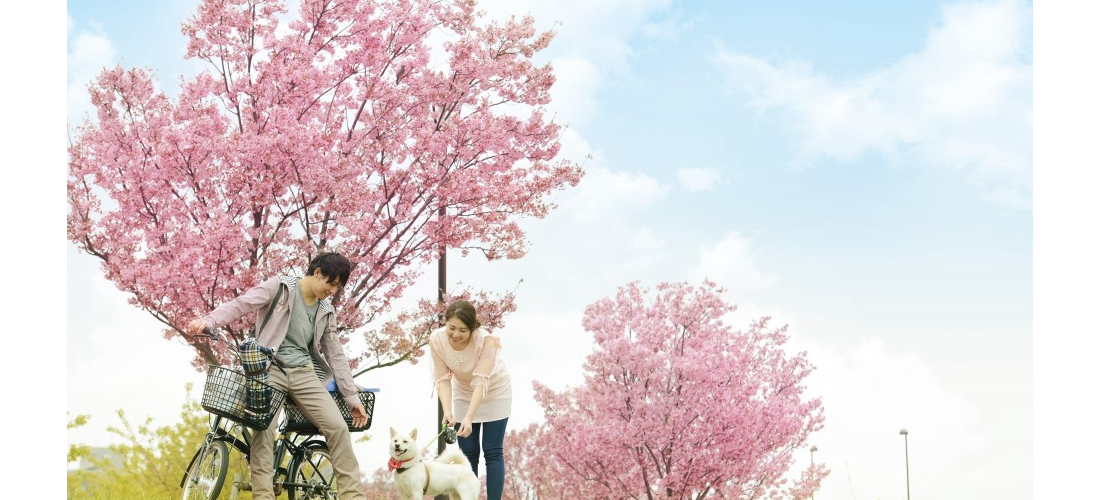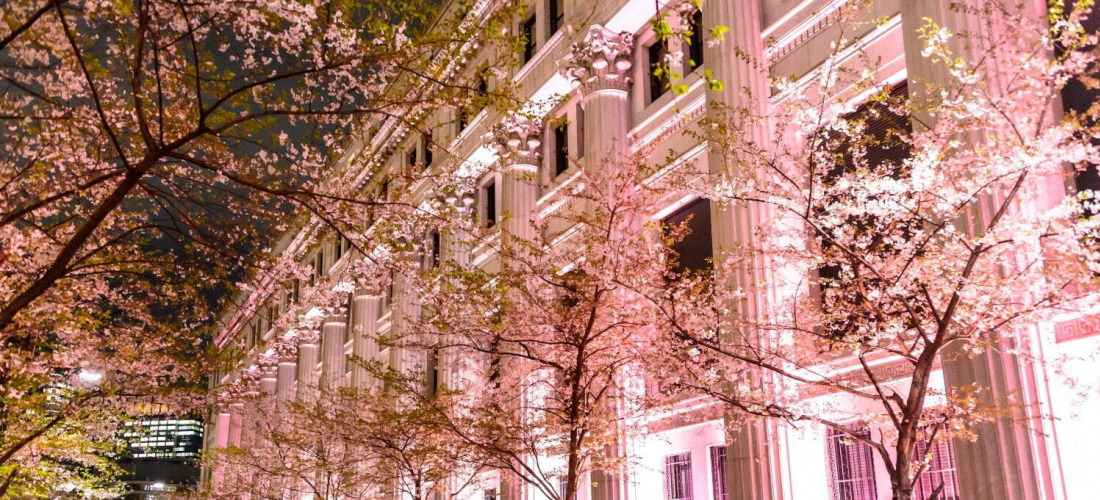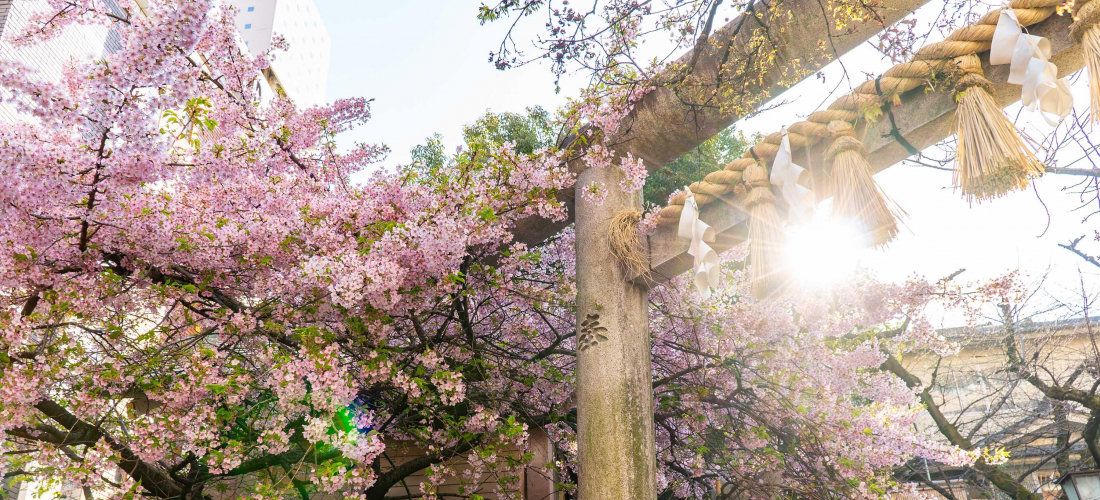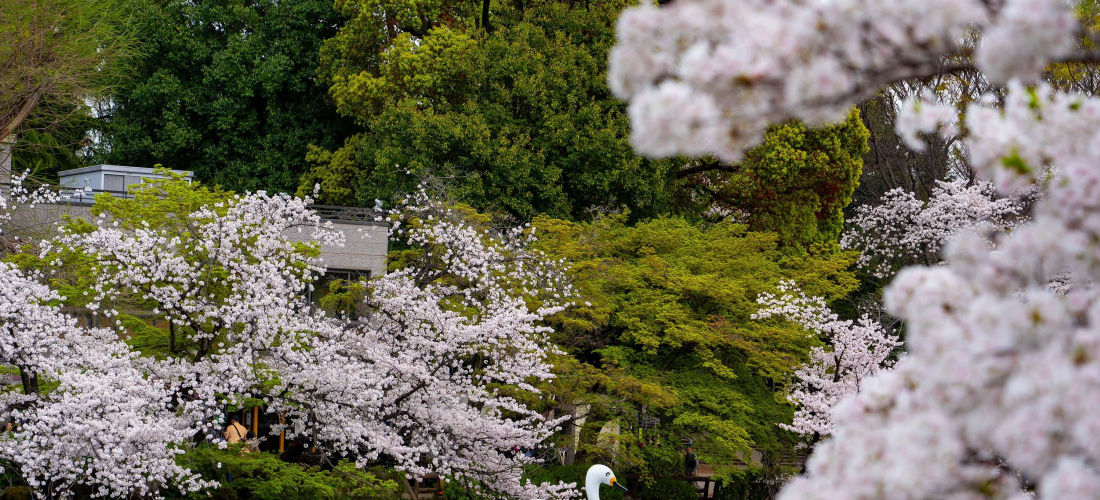CONTENTS
Looking for the best cherry blossoms in Japan this year? This guide to sakura spots around Japan, and when to see them, will get you started on your Japanese cherry blossom journey!
🌸 The Best Time to See Cherry Blossoms in Japan 🌸
The exact dates for cherry blossom blooms around Japan vary year to year, and from city to city, but in general the best time for cherry blossom viewing in Japan is from late March through April. Choosing the best travel dates to see Japan’s cherry blossoms at their best can be a little complicated, though, since regional climates and even individual trees can vary dramatically!
In the early days of each spring, experts take a look at the weather patterns, and they make specific predictions for the coming sakura season, and in 2025 Japan’s cherry blossoms will be blooming right on time! Or… maybe a few days late. Initial forecasts announced an extremely typical cherry blossom season, but weather patterns have pushed the forecast for Sapporo forward by a few days, while slightly delaying the blooms in Tokyo, Kyoto, Osaka, and other major destinations.

At the end of the day, not only are cherry trees capricious and unpredictable, but different varieties of cherry tree generally bloom at different times! These yearly forecasts are based on the brief blooming period (about two weeks) of a tree called the Yoshino Cherry or the Somei-yoshino, a hugely popular variety with pale pink (almost white) blossoms that can be found all around Japan. But there are also early and late-blooming cherry blossoms in Japan, like the early spring Kawazu-sakura or even cherry trees that bloom in autumn!
Cherry blossom season isn’t exactly one specific time, which means that finding the perfect spot for your cherry blossom viewing trip can be more important than getting the timing right. But sightseers looking to enjoy Japan’s beautiful cherry blossoms will still want to get a start on their hanami plans before it’s too late, especially anyone looking to see Japan’s most popular cherry blossom spots! To enjoy some of the best cherry blossom viewing destinations in Tokyo and around Japan this year, check out our guide below.
🌸 Tokyo Cherry Blossom Spots 🌸
Ready to surround yourself with pink petals and sweeping cherry boughs? We’ve collected a few top spots around Japan just for you, starting with Tokyo!
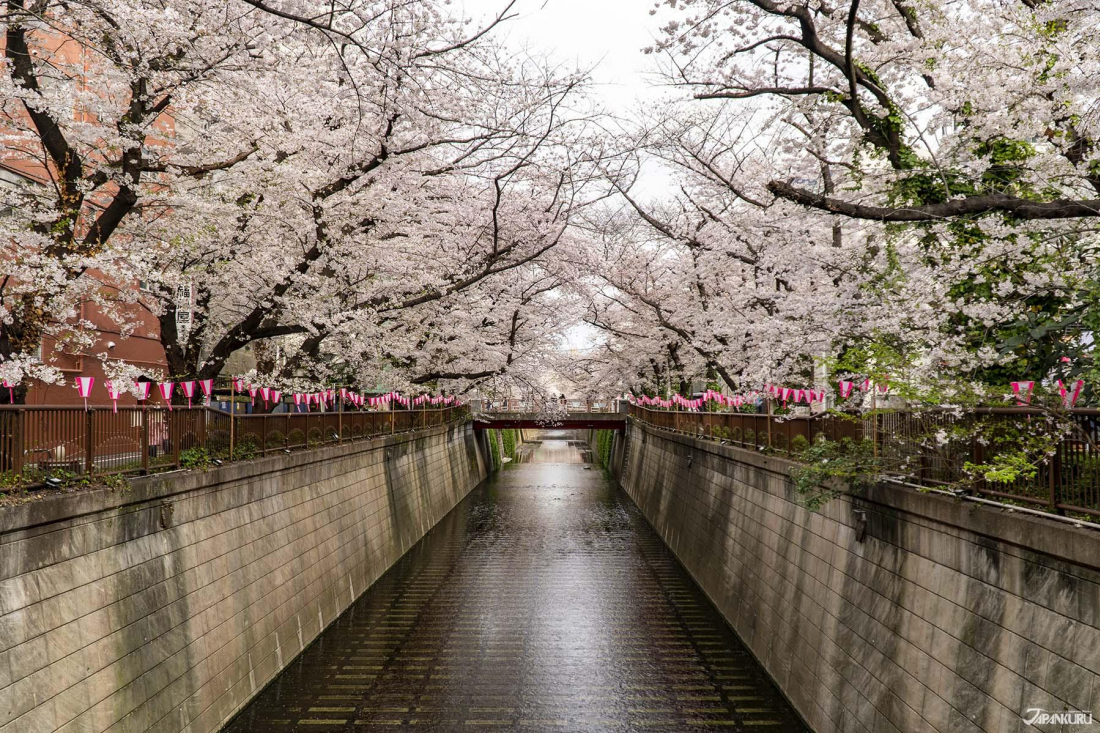
① Meguro River (目黒川の桜)
Located in the Nakameguro area near Shibuya, Meguro River (目黒川) is consistently one of, if not the, most popular place to go cherry blossom viewing in Tokyo. There are over 800 cherry blossom trees lined up along the riverbanks, stretching on for almost 4km (2.5 miles). Lanterns hang along the river in front of the trees, making the spot equally beautiful in the sunshine and after sunset, when the lanterns cast a soft glow on the flowers. While there are a few restaurants and convenience stores nearby, and food and drink stands set up during the Meguro River Cherry Blossom Festival season, this isn’t really a good place for the hanami picnic tradition. There isn’t much space to lay down a tarp and spread out! So join the crowds and take a nice walk among the flowers instead!
Meguro River (目黒川の桜)
Meguro River, Meguro City, Tokyo
Access: 5 min walk from JR Meguro Station

② Rikugien (六義園の桜)
During the cherry blossom season, Rikugien is most famous for the garden’s huge weeping cherry blossom tree, which towers above at 15m (almost 50ft) high and 20m (65ft) wide, with blooms said to “pour like a waterfall.” At night the weeping cherry blossom tree is lit from below, making it one of Tokyo’s most famous nighttime cherry blossom viewing spots. Aside from its spectacular sakura, Rikugien is a traditional Japanese garden, first constructed by a local samurai in 1695, with permission from the Tokugawa shogunate.
Rikugien (六義園の桜)
6-16-3 Honkomagome, Bunkyo City, Tokyo
Access: 7 min walk from JR Komagome Station
Park Hours: 9:00 – 17:00
Light Up: sunset – 21:00
Admission: 300 yen
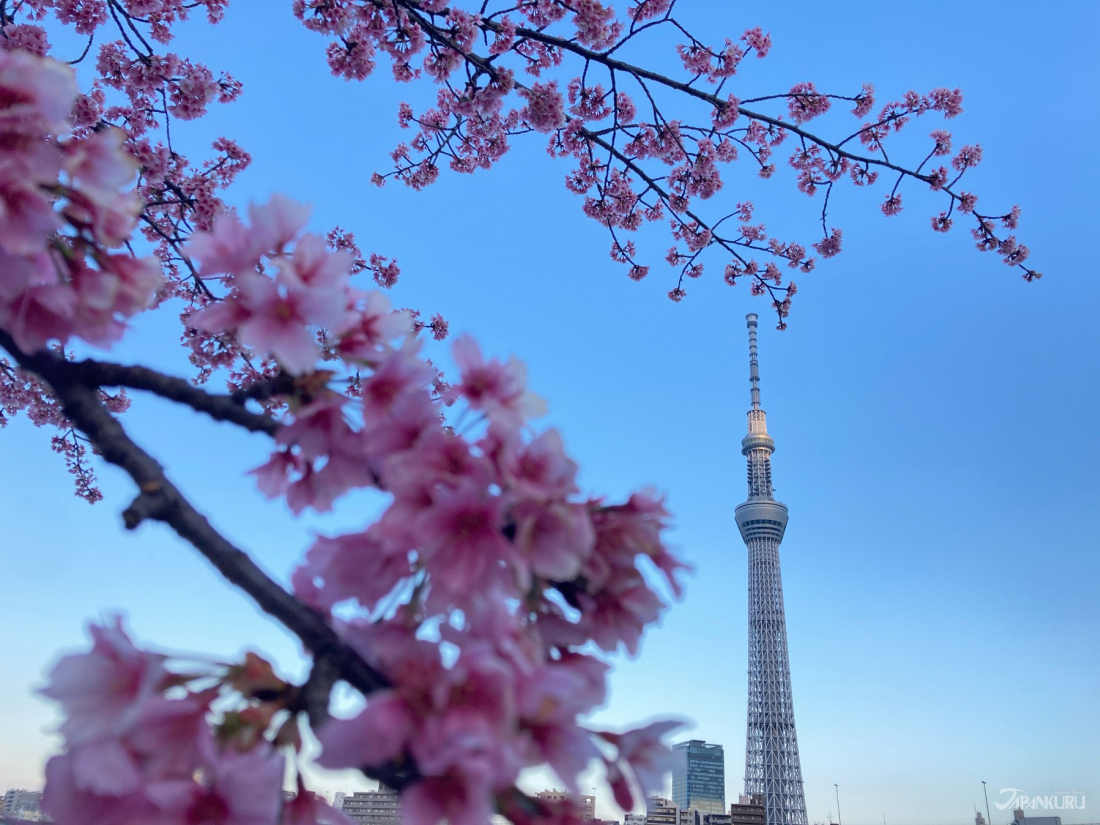
③ Sumida Park (隅田公園)
Right next to the popular sightseeing area of Asakusa, and with a great view of Tokyo Skytree in the background, the many sakura trees that grow along the water on the Sumida River make it a beautiful place to take a walk under the fluttering pink petals and breathe in the fresh spring air.
Sumida Park (隅田公園)
1 Hanakawado, Taito City, Tokyo
Access: 5 min walk from Asakusa Station

④ Chidorigafuchi Park (千鳥ヶ淵公園)
One of the most impressive cherry blossom viewing spots in Tokyo is just five minutes from the nearest station, with about 170 cherry trees spread between Tokyo’s Imperial Palace and the British Embassy. The reflection of the cherry blossoms in the water is noted as being particularly beautiful, and the area is always crowded with people during sakura season.
Chidorigafuchi Park (千鳥ヶ淵公園)
1-2 Kojimachi, Chiyoda City, Tokyo
Access: 5 min walk from Tokyo Metro Hanzomon Station Exit 5

⑤ Shinjuku Gyoen National Garden (新宿御苑の桜)
Shinjuku Gyoen National Garden, where over 1000 cherry trees of 65 different species bloom each year, has an incredibly long cherry blossom season thanks to the trees’ variety! Visit the popular park any time in late March or early April to see different sakura blooming throughout the different gardens, each blooming at a slightly different time, and many with slightly different flowers as well. Plus, Shinjuku Gyoen is (unsurprisingly) right in Shinjuku, so after a picnic in the park you can spend the afternoon exploring one of Tokyo’s busiest neighborhoods.
Shinjuku Gyoen National Garden (新宿御苑の桜)
11 Naitomachi, Shinjuku City, Tokyo
Access: 5 min walk from Shinjuku Gyoenmae Station, or 10 min walk from JR Shinjuku Station South Exit
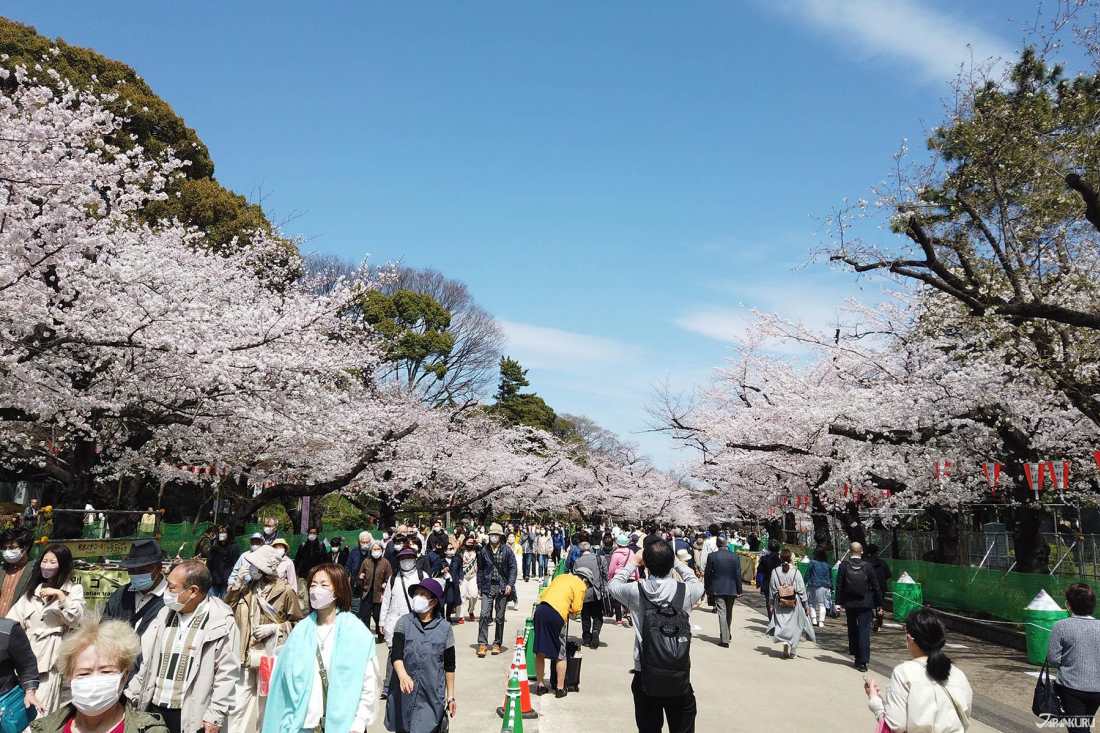
↑ Ueno Park
Other great places to see cherry blossoms in the Tokyo area include Ueno Park (上野公園), Inokashira Park (井の頭公園), Yoyogi Park (代々木公園), and Hibiya Park (日比谷公園). Tokyo’s cherry blossoms generally begin blooming towards the end of March, but they’ll usually stick around through early April!
🌸 Osaka Cherry Blossom Spots 🌸

⑥ Osaka Castle (大阪城)
One of Osaka’s most famous sightseeing spots, Osaka Castle is the perfect venue for hanami (cherry blossoms viewing). Osaka Castle has a long history of being taken and (unfortunately) destroyed by many Japanese warlords like Oda Nobunaga and Hidetada Tokugawa, making it an extremely important historical site, but the surrounding park is also filled with sakura! The park area covers around 494 acres, filled with trails and grassy areas perfect for picnics or frisbee under the cherry blossoms. There are over 4,000 cherry blossom trees all around the castle, and at night the cherry blossoms are lit up by surrounding lanterns and lights, for a romantic touch.
Osaka Castle (大阪城)
1-1 Osakajo, Chuo Ward, Osaka
Access: Osakajo Koen Station on the JR Osaka Loop Line
Castle Admission: 600 yen (park is free)
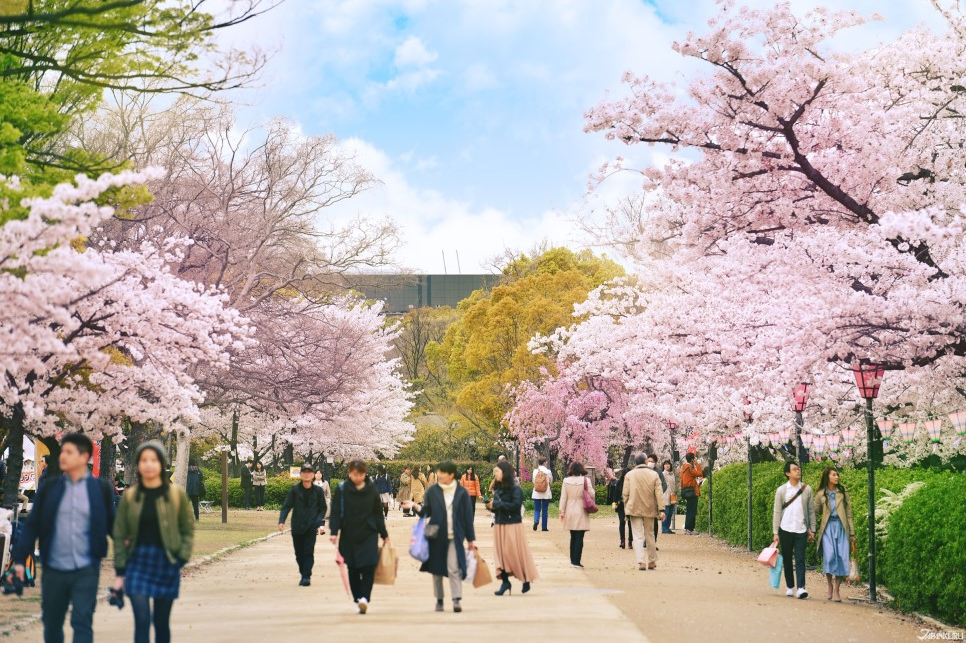
⑦ Expo’70 Commemorative Park (万博記念公園)
A symbol of Osaka, the Expo’70 Commemorative Park is about 260 hectares (642 acres) packed with not only a Japanese garden, but also the Japan Folk Crafts Museum, National Museum of Ethnology, and many sports and recreation areas. It’s a little like the Ueno Park of Osaka! There are some 5,500 cherry blossom trees planted around the park, with nine different varieties of cherry blossoms. Ever since the park was chosen as one of “Japan’s Top 100 Cherry Blossom Spots,” they’ve extended the hanami hours until 9pm every night, and they light up the trees at night as well!
Expo ’70 Commemorative Park (万博記念公園)
Senribanpakukoen, Suita, Osaka
Access: 1 min walk from Banpaku-Kinen-Koen Station on the Osaka Monorail
Hours: 9:30 – 21:00 (last entry 20:30)
🌸 Nagoya Cherry Blossom Spots 🌸
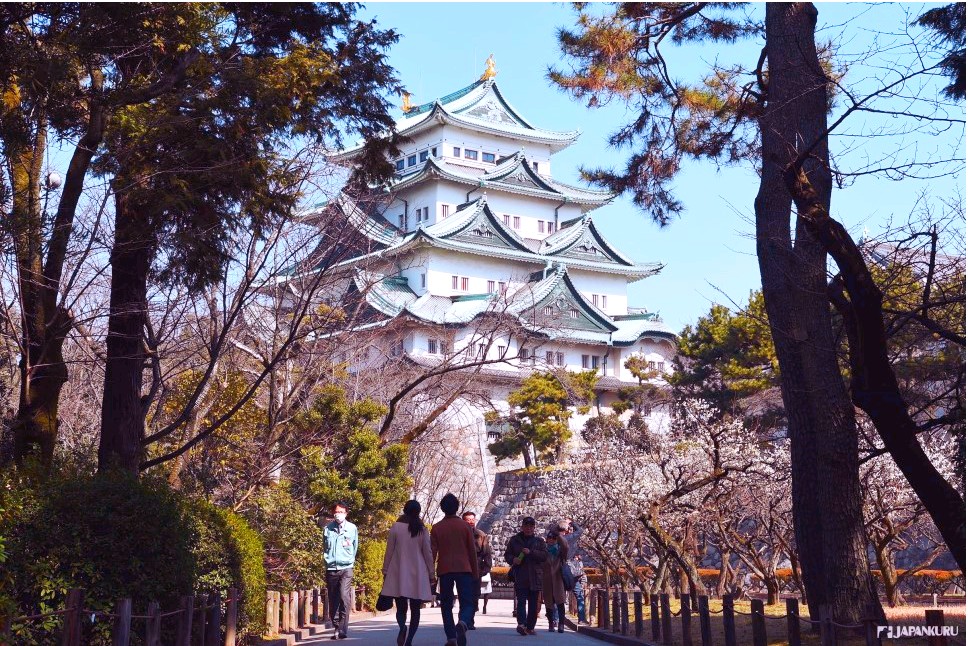
⑧ Nagoya – Nagoya Castle (名古屋城)
With about 1000 cherry blossom trees, Nagoya Castle might be the second most popular place for hanami in Aichi Prefecture in some rankings, but the historic majesty of the castle really sets off the lovely pink of the flowers. There’s nothing more Japanese than a stroll through a cherry blossom garden in the shade of a towering castle! Even at night, Nagoya Castle keeps the castle grounds illuminated, so visitors can even enjoy the cherry blossoms after dark.
Nagoya Castle (名古屋城)
1-1 Honmaru, Naka Ward, Nagoya, Aichi
Access: Shiyakusho Station or Sengencho Station
Castle Admission: 500 yen (park is free)
Going back to that ranking above, many people say that the very best spot for cherry blossom viewing in Aichi Prefecture is actually Dogo Park (道後公園) near Dogo Onsen! Nagoya locals also frequently recommend Tokugawaen Garden (徳川園), which is only about 10 minutes from Nagoya Castle by bus.
🌸 Plan the Perfect Cherry Blossom Trip 🌸
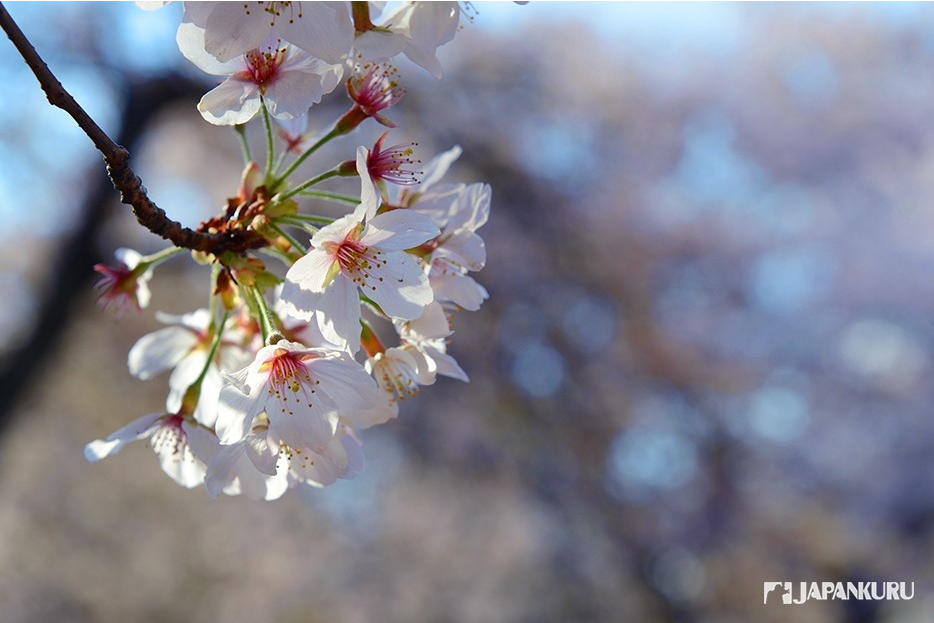
Cherry blossom viewing is an iconic part of springtime in Japan, and one of the biggest reasons why so many travelers choose to visit the country during March and April each year, to the point that “sakura” and “hanami” have made their way into English sightseeing brochures and beyond. With so many great places to view the flowers throughout Japan, we couldn’t even begin to list them all! But armed with a few popular spots, hopefully you’ll know where to get started next time you find yourself surrounded by Japan’s pink flowers and hanami traditions!
For more info and updates from Japan, check Japankuru for new articles, and don’t forget to follow us on twitter, instagram, and facebook!
Details
NAME:hanami (花見)
COMMENT
FEATURED MEDIA
VIEW MORE 
A New Tokyo Animal Destination: Relax & Learn About the World’s Animals in Japan
#pr #japankuru #anitouch #anitouchtokyodome #capybara #capybaracafe #animalcafe #tokyotrip #japantrip #카피바라 #애니터치 #아이와가볼만한곳 #도쿄여행 #가족여행 #東京旅遊 #東京親子景點 #日本動物互動體驗 #水豚泡澡 #東京巨蛋城 #เที่ยวญี่ปุ่น2025 #ที่เที่ยวครอบครัว #สวนสัตว์ในร่ม #TokyoDomeCity #anitouchtokyodome

Shohei Ohtani Collab Developed Products & Other Japanese Drugstore Recommendations From Kowa
#pr #japankuru
#kowa #syncronkowa #japanshopping #preworkout #postworkout #tokyoshopping #japantrip #일본쇼핑 #일본이온음료 #오타니 #오타니쇼헤이 #코와 #興和 #日本必買 #日本旅遊 #運動補充能量 #運動飲品 #ช้อปปิ้งญี่ปุ่น #เครื่องดื่มออกกำลังกาย #นักกีฬา #ผลิตภัณฑ์ญี่ปุ่น #อาหารเสริมญี่ปุ่น

도쿄 근교 당일치기 여행 추천! 작은 에도라 불리는 ‘가와고에’
세이부 ‘가와고에 패스(디지털)’ 하나면 편리하게 이동 + 가성비까지 완벽하게! 필름카메라 감성 가득한 레트로 거리 길거리 먹방부터 귀여움 끝판왕 핫플&포토 스폿까지 총집합!
Looking for day trips from Tokyo? Try Kawagoe, AKA Little Edo!
Use the SEIBU KAWAGOE PASS (Digital) for easy, affordable transportation!
Check out the historic streets of Kawagoe for some great street food and plenty of picturesque retro photo ops.
#pr #japankuru #도쿄근교여행 #가와고에 #가와고에패스 #세이부패스 #기모노체험 #가와고에여행 #도쿄여행코스 #도쿄근교당일치기 #세이부가와고에패스
#tokyotrip #kawagoe #tokyodaytrip #seibukawagoepass #kimono #japantrip

Hirakata Park, Osaka: Enjoy the Classic Japanese Theme Park Experience!
#pr #japankuru #hirakatapark #amusementpark #japantrip #osakatrip #familytrip #rollercoaster #retrôvibes #枚方公園 #大阪旅遊 #關西私房景點 #日本親子旅行 #日本遊樂園 #木造雲霄飛車 #히라카타파크 #สวนสนุกฮิราคาตะพาร์ค

🍵Love Matcha? Upgrade Your Matcha Experience With Tsujiri!
・160년 전통 일본 말차 브랜드 츠지리에서 말차 덕후들이 픽한 인기템만 골라봤어요
・抹茶控的天堂!甜點、餅乾、飲品一次滿足,連伴手禮都幫你列好清單了
・ส่องมัทฉะสุดฮิต พร้อมพาเที่ยวร้านดังในอุจิ เกียวโต
#pr #japankuru #matcha #matchalover #uji #kyoto #japantrip #ujimatcha #matchalatte #matchasweets #tsujiri #말차 #말차덕후 #츠지리 #교토여행 #말차라떼 #辻利抹茶 #抹茶控 #日本抹茶 #宇治 #宇治抹茶 #日本伴手禮 #抹茶拿鐵 #抹茶甜點 #มัทฉะ #ของฝากญี่ปุ่น #ชาเขียวญี่ปุ่น #ซึจิริ #เกียวโต

・What Is Nenaito? And How Does This Sleep Care Supplement Work?
・你的睡眠保健品——認識「睡眠茶氨酸錠」
・수면 케어 서플리먼트 ‘네나이토’란?
・ผลิตภัณฑ์เสริมอาหารดูแลการนอน “Nenaito(ネナイト)” คืออะไร?
#pr #japankuru #sleepcare #japanshopping #nenaito #sleepsupplement #asahi #睡眠茶氨酸錠 #睡眠保健 #朝日 #l茶胺酸 #日本藥妝 #日本必買 #일본쇼핑 #수면 #건강하자 #네나이토 #일본영양제 #อาหารเสริมญี่ปุ่น #ช้อปปิ้งญี่ปุ่น #ร้านขายยาญี่ปุ่น #ดูแลตัวเองก่อนนอน #อาซาฮิ

Japanese Drugstore Must-Buys! Essential Items from Hisamitsu® Pharmaceutical
#PR #japankuru #hisamitsu #salonpas #feitas #hisamitsupharmaceutical #japanshopping #tokyoshopping #traveltips #japanhaul #japantrip #japantravel

Whether you grew up with Dragon Ball or you just fell in love with Dragon Ball DAIMA, you'll like the newest JINS collab. Shop this limited-edition Dragon Ball accessory collection to find some of the best Dragon Ball merchandise in Japan!
>> Find out more at Japankuru.com! (link in bio)
#japankuru #dragonball #dragonballdaima #animecollab #japanshopping #jins #japaneseglasses #japantravel #animemerch #pr

This month, Japankuru teamed up with @official_korekoko to invite three influencers (originally from Thailand, China, and Taiwan) on a trip to Yokohama. Check out the article (in Chinese) on Japankuru.com for all of their travel tips and photography hints - and look forward to more cool collaborations coming soon!
【橫濱夜散策 x 教你怎麼拍出網美照 📸✨】
每次來日本玩,是不是都會先找旅日網紅的推薦清單?
這次,我們邀請擁有日本豐富旅遊經驗的🇹🇭泰國、🇨🇳中國、🇹🇼台灣網紅,帶你走進夜晚的橫濱!從玩樂路線到拍照技巧,教你怎麼拍出最美的夜景照。那些熟悉的景點,換個視角說不定會有新發現~快跟他們一起出發吧!
#japankuru #橫濱紅磚倉庫 #汽車道 #中華街 #yokohama #japankuru #橫濱紅磚倉庫 #汽車道 #中華街 #yokohama #yokohamaredbrickwarehouse #yokohamachinatown

If you’re a fan of Vivienne Westwood's Japanese designs, and you’re looking forward to shopping in Harajuku this summer, we’ve got important news for you. Vivienne Westwood RED LABEL Laforet Harajuku is now closed for renovations - but the grand reopening is scheduled for July!
>> Find out more at Japankuru.com! (link in bio)
#japankuru #viviennewestwood #harajuku #omotesando #viviennewestwoodredlabel #viviennewestwoodjapan #비비안웨스트우드 #오모테산도 #하라주쿠 #日本購物 #薇薇安魏斯伍德 #日本時尚 #原宿 #表參道 #japantrip #japanshopping #pr

Ready to see TeamLab in Kyoto!? At TeamLab Biovortex Kyoto, the collective is taking their acclaimed immersive art and bringing it to Japan's ancient capital. We can't wait to see it for ourselves this autumn!
>> Find out more at Japankuru.com! (link in bio)
#japankuru #teamlab #teamlabbiovortex #kyoto #kyototrip #japantravel #artnews
Photos courtesy of teamLab, Exhibition view of teamLab Biovortex Kyoto, 2025, Kyoto ® teamLab, courtesy Pace Gallery

Japanese Makeup Shopping • A Trip to Kamakura & Enoshima With Canmake’s Cool-Toned Summer Makeup
#pr #canmake #enoshima #enoden #에노시마 #캔메이크 #japanesemakeup #japanesecosmetics

⚔️The Robot Restaurant is gone, but the Samurai Restaurant is here to take its place. Check it out, and don't forget your coupon!
🍣신주쿠의 명소 로봇 레스토랑이 사무라이 레스토랑으로 부활! 절찬 쿠폰 발급중
💃18歲以上才能入場的歌舞秀,和你想的不一樣!拿好優惠券去看看~
#tokyo #shinjuku #samurairestaurant #robotrestaurant #tokyotrip #도쿄여행 #신주쿠 #사무라이레스토랑 #이색체험 #할인이벤트 #歌舞伎町 #東京景點 #武士餐廳 #日本表演 #日本文化體驗 #japankuru #japantrip #japantravel #japanlovers #japan_of_insta

Japanese appliance & electronics shopping with our KOJIMA x BicCamera coupon!
用JAPANKURU的KOJIMA x BicCamera優惠券買這些正好❤️
코지마 x 빅 카메라 쿠폰으로 일본 가전 제품 쇼핑하기
#pr #japankuru #japanshopping #kojima #biccamera #japaneseskincare #yaman #dji #osmopocket3 #skincaredevice #日本購物 #美容儀 #相機 #雅萌 #日本家電 #일본여행 #면세 #여행꿀팁 #일본쇼핑리스트 #쿠폰 #일본쇼핑 #일본브랜드 #할인 #코지마 #빅카메라 #japankurucoupon

